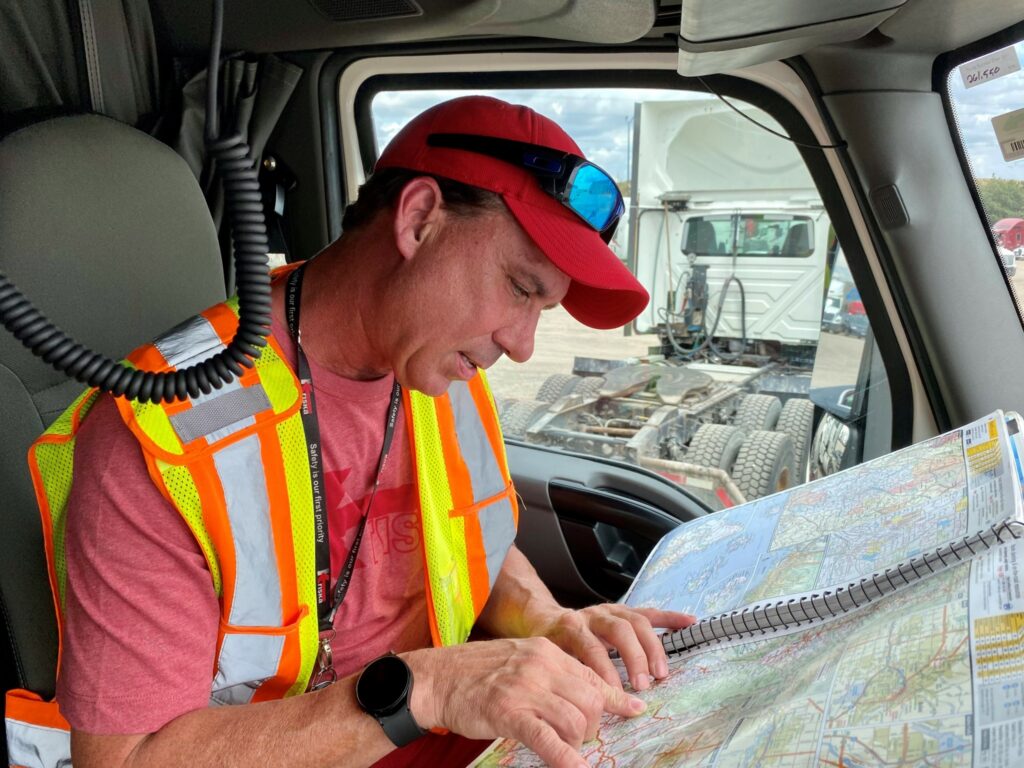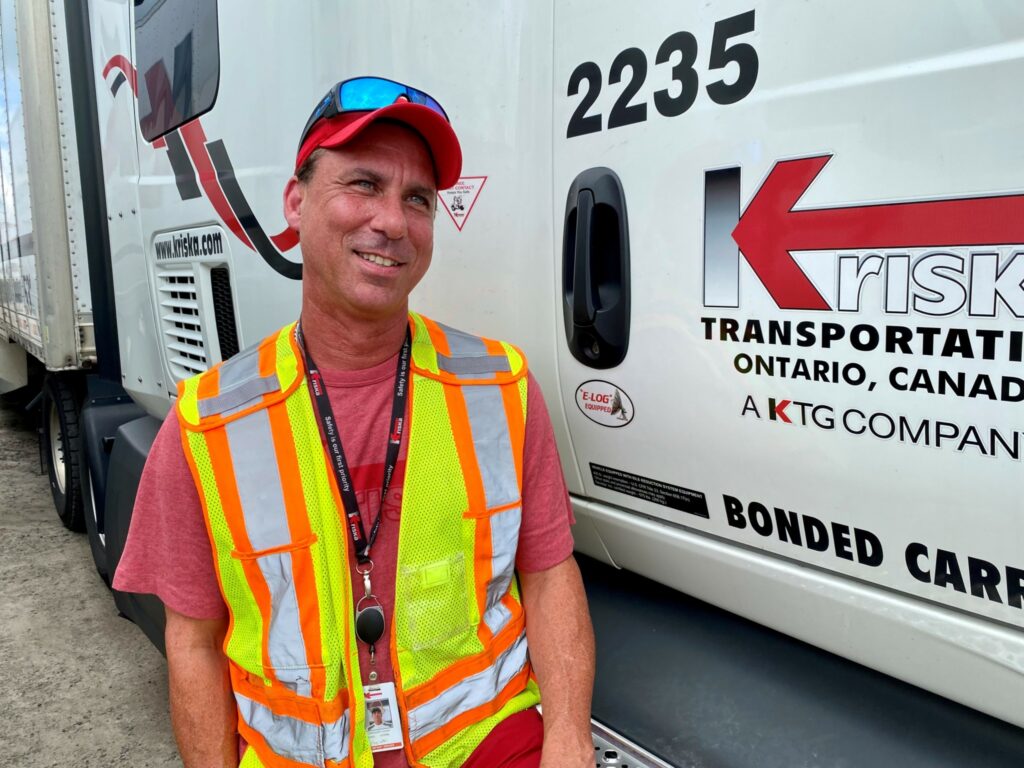8 tips for driving a truck across the Canada-U.S. border
For many truck drivers, crossing the Canada-U.S. border is a regular part of the job. According to the Canadian Trucking Alliance (CTA), about 120,000 drivers from Canada are engaged in cross-border trucking.
But for those who are new to the experience, the process can still seem intimidating.
Kriska Transportation Group’s Greg Cook has been training new truckers for the past eight years, and worked as a professional driver for 25 years. He advises trainees to prepare for several questions, stay calm, and have paperwork at the ready.

Here are Cook’s eight dos and don’ts to help ease the journey across the border:
1. Plan the trip
Make sure the Bill of Lading matches the destination before you leave. Check the GPS for routing and ensure it is not taking you down toll roads that you are not supposed to use. Double check your route on a paper map if you can, and prepare where you will stop and refuel. Cook tells drivers to identify a couple of stops, write them on a sticky note, and place it on the dash. There’s never any worry about a note losing battery power.
2. Turn off the reefer at the immigration booth
When hauling a refrigerated load, turn off the reefer while lined up at the booth. Also turn off the engine, but don’t set the air brakes. It helps to ensure everyone can hear you clearly. Once the immigration official allows you to proceed, roll ahead and then make a quick stop to turn on the reefer. “Otherwise, your ice cream load is going to be melted by the time you reach your delivery stop,” Cook notes.
3. Know what questions to expect
The most common question asked at the booth is, “Where have you been?” For example, if a delivery was made in DeKalb, Illinois, and a load was picked up in Jacksonville, Florida, tell the officer where the first load was dropped and where the load coming into Canada was picked up. This will help address any questions about cabotage.
Other questions may cover citizenship and where you live; days spent outside Canada; the goods being hauled; goods to declare; and whether the load is sealed and who sealed it.

4. Have personal documents at the ready
Border-crossing truck drivers must carry a passport, driver’s licence, and proof of insurance – including U.S. health coverage provided by an employer. Recent immigrants traveling into the U.S. will also require a visa and an I-94 document that defines the traveler’s visa status once inside the U.S., and the length of stay that’s permitted. If you’re not a permanent resident of Canada, you’ll also need to present the work permit when returning from the U.S.
5. Ensure vehicle paperwork is valid
A valid IFTA (International Fuel Tax Agreement) sticker must be displayed on the truck, while the trailer will require a valid safety sticker. Most companies also provide a file containing documents such as a Commercial Vehicle Operator’s Registration (CVOR), tractor and trailer ownership, insurance, permits and certificates for different states, and details about what is being hauled. Know where the details can be found so you can reach them at a moment’s notice.
6. Check the freight requirements
Freight-related documents include the Bill of Lading; Canada Customs Invoice (also known as the pro-invoice) that includes the dollar value of the goods; certificates for meat or medication; temperature control documents for reefer loads; security seal numbers; and details about loads including the number of pallets, weights, and descriptions. Loads of meat, meanwhile, will need to be inspected at border crossings before being delivered to customers.
Other required documents include ACI – Advance Commercial Information for the Canada Border Services Agency, PARS (pre-arrival review system) to enter Canada, and PAPS (pre-arrival processing system) to enter the U.S.
7. Know what NOT to carry
Weapons and alcohol are a big NO. “You can’t stop by the duty free and pick up a two-four because it’s cheaper,” Cook said. Citrus fruits are also not allowed in the cab.
8. Arrive at the correct crossing
A truck’s entry point is set up on the Automated Commercial Environment (ACE). If a driver arrives at the wrong border crossing, they could be turned around and face fines, Cook says. Check with your fleet a couple of hours before crossing the border to ensure all the paperwork is in order. It’s better to discover documents are missing beforehand rather than being turned away from the border, he adds.
Have your say
This is a moderated forum. Comments will no longer be published unless they are accompanied by a first and last name and a verifiable email address. (Today's Trucking will not publish or share the email address.) Profane language and content deemed to be libelous, racist, or threatening in nature will not be published under any circumstances.
Interesting to see what is needed for our truckers entering the US and re entering Canada…. Good article.